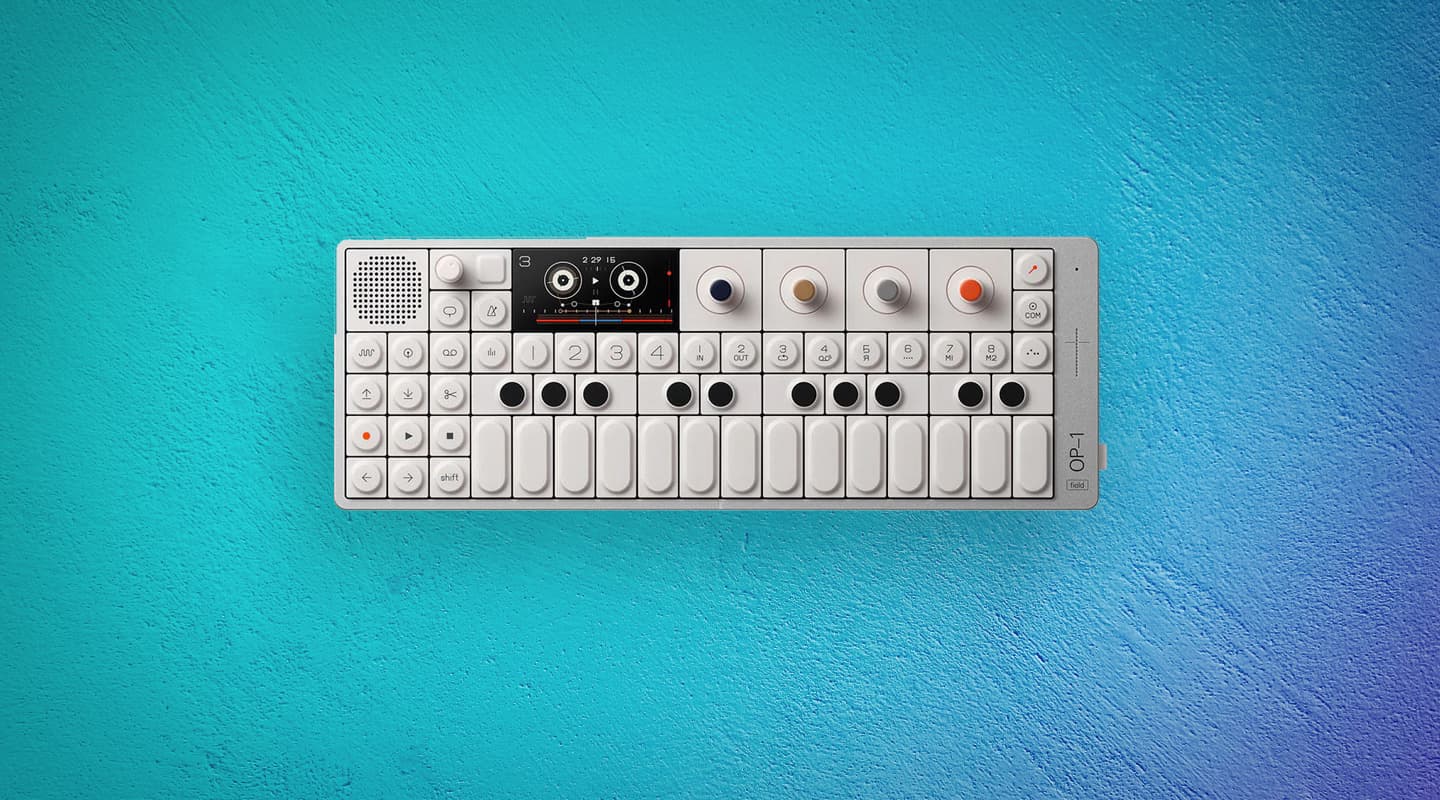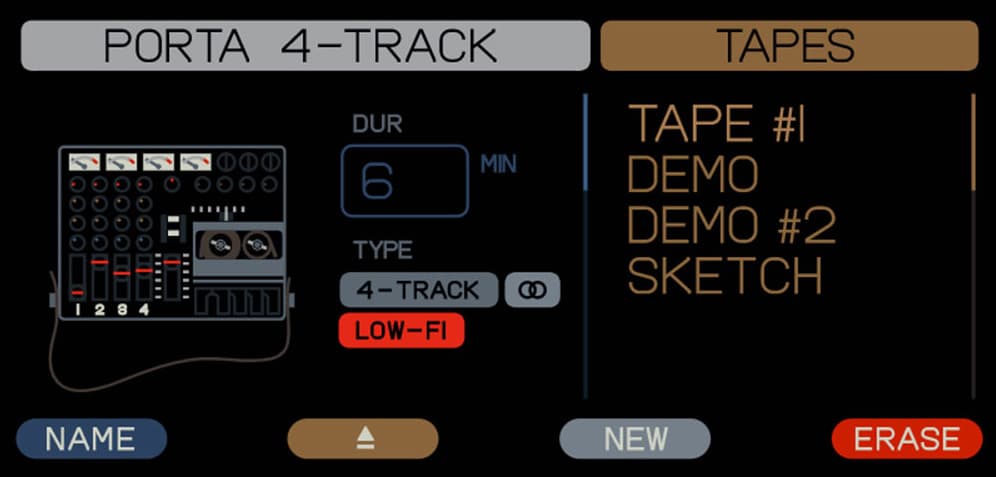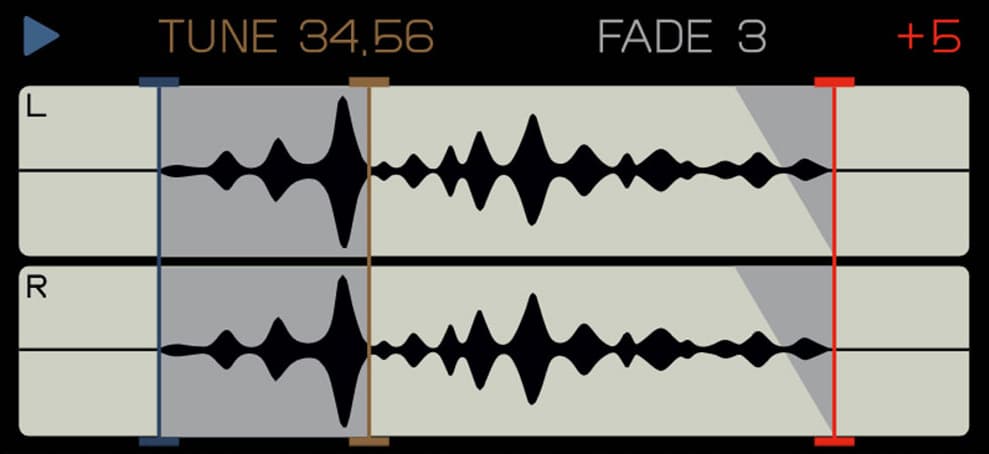
Review: Teenage Engineering OP-1 Field
Has the youthful Swedish cult hero grown up, or will it remain forever young?
Review: Corey Hague
When Swedish company Teenage Engineering launched the original OP-1 back in 2011, the quirky gadget quickly gained a following among those who wanted portability and a unique approach to music making. The stylish design certainly didn’t hurt business either, with the distinctive device showing up in A-List studios, Ibiza-bound private jets or surrounded by succulents wherever you looked.
But a lot has changed since 2011: the compact noisemaker market is now thriving and synths of all varieties have become more affordable than ever. So has the Teenager grown up with the new OP-1 Field? Or is the little white keyboard doomed to be forever young?
FOREVER YOUNG?
The answer is probably somewhere in the middle, and the name reflects the approach — while it has very much matured and become more refined, it’s not an extreme departure from the original.
Teenage Engineering themselves refer to the OP-1 Field as an ‘evolution’ and that’s not just cute marketing speak, as the Field is an OP-1 but better rather than an overhauled, brand new OP2. Teenage Engineering claims the Field offers 100 new features, many as a result of user feedback.
Naming conventions aside, the very first thing you notice about the Field is how premium the entire package feels — it’s almost as though it was made with unboxing videos in mind. It’s impossible to not be reminded of a certain fruit company when you remove the Field from its cocoon; this isn’t the usual styrofoam and generic wall wart package you often find with music equipment, and the box itself is designed to double as a transport case thanks to elastic straps keeping things snug in a recycled cardboard case.
Along with the Field you also get a nice thick USB-C cable and a small instruction manual. Another small feature of the package are some handy velcro pads, which can be used to stick the Field onto music stands or amps.
All considerate stuff, but the star of the show is the Field itself, and thankfully it lives up to the luxe packaging.
INSTANT REPONSE
Despite how small it is (28.8 x 10.2 x 2.9cm) there’s a satisfying heft to it — the metal and plastic construction feels solid and firm, with a satisfying ‘clack’ to the tactile buttons, similar to a mechanical keyboard. Flick the chunky power switch on the right side of the unit and it quickly springs to life, ready to make some music. No tedious boot screens here, it’s almost instantaneous.
Having not extensively used the OP-1 in the past, I have to admit to initially treating the Field a bit like a traditional synth. After all, it looks like one, and the small keys follow a standard piano layout. Despite how small the keys are, they’re surprisingly responsive to play with, and despite having no real piano playing skills, I found the Field’s keyboard easy to play chords or simple melodies, with very few missed notes.
Pressing the synth button (as noted by a squiggly sine wave icon) brings up a good amount of synth engine options. Exploring through the different engines, they all sound remarkably usable. Normally preset patches leave me absolutely cold but there are very few unusable sounds in the Field, and the engines all do a good job of delivering different flavours. The FM and Phase Engines are capable of smooth or aggressive sounds, the Digital synth can indeed become extremely digital and the Dr Wave can deliver traditional subtractive synth sounds. The Sampler acts like a sampler, and does so in a refreshingly straightforward manner. Despite having limited sculpting options over the sounds (the four coloured knobs do all the tweaking), there’s enough range within them to either dial in what you want, or twist it into something different.
NEED TO KNOW
Teenage Engineering OP-1 Field
Synthesizer & Recorder


MORE THAN A SYNTH
After exploring the synth sounds for probably longer than I should have, it dawned on me that people love the OP-1 not just as a synth, but as a self-contained musical tool. So it was time to delve into the wonderful world of Tape, or at least ‘tape’ as reimagined by Teenage Engineering.
I don’t mourn the demise of four-track tape recording, so it took me a while to come to grips with the way the Field approaches recording. Selecting one of the four different tape styles (studio four-track, vintage four-track, porta four-track and disk mini) lets you start recording. You have four tracks each with six minutes available on them, and what you do with them is entirely up to you.
After messing around with trying to make music the way I always have (sequence some drums, build from there) I had probably started and deleted at least 20 ‘tapes’ without great success. The breakthrough came when I decided to simply record a few minutes of noise courtesy of the built-in FM tuner, and then build from there.
This proved to be where the Field shines, as my mind shifted away from the notion of ‘sequencing’ and instead to ‘recording’, a whole world opened up. I suddenly understood why people loved the original OP-1 so much, and the device morphed from being a curiosity into an instrument which encourages its own way of working and exploring.
Once this switch occurred I began to enjoy the process of making music on the Field, and quickly began making musical sketches across the various tape flavours. They mostly fell towards little melodic ambient ditties using the built-in arpeggiator sequencer, good but simple delay, and the built-in microphone. It was genuinely inspiring to have these tools available, and each new ‘tape’ made use of a different synth or tape technique, particularly slowing the tape playback which is a very handy shortcut towards woozy ‘vaporwave’ type sounds.
the very first thing you notice about the Field is how premium the entire package feels — it’s almost as though it was made with unboxing videos in mind
INTEGRATION
After spending some time knocking out tapes (there’s space for eight tapes to be saved on the device) I connected the Field to my laptop to transfer the files. It easily connects to reveal a logical file structure which then lets you grab the multitracks for each tape. When I loaded these up into my usual DAW I was happy to hear they still sounded remarkably good on playback, which isn’t always the case when switching from machine to machine.
While the Field was connected I took the chance to see how easy it was to load new sounds in and was pleasantly surprised to see it was a pain-free experience. The OP-1.fun community website was bursting with new sounds, loops, drums and patches so I loaded up and quickly started making more tapes on the Field.
TEENAGE KICKS
I’ve always wanted something simple and small to make music on, and I’ve tried plenty of options, from laptops to tablets to eurorack skiffs and standalone sequencers. The novelty of being away from the studio always gave way to frustration for one reason or another and I’d head back to the studio to actually get some music made.
But I can safely say, that’s not the case for the Field, it really does manage to do an awful lot in a compact package in an elegant way. It’s not bogged down with options but it’s not oppressively rigid in its approach either, and it keeps luring me back to explore its charms. The ability to just turn it on, press play and hear what you’ve been tinkering with means you really can just pick it up and put it down throughout the day, without it being an ordeal to make some noise. Which can only be a good thing for creativity.
It’s undoubtedly an expensive piece of kit, which has earned plenty of strident comment on the internet, but to overlook the value of the Field because of the cost is a massive disservice. Teenage Engineering has created something unique, premium and special with the Field, and it will undoubtedly become another classic among those it resonates with.
















RESPONSES